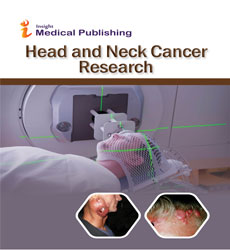Abstract
Emergency Surgical Treatment of Upper Airway Obstruction in Oncological Patients: Bibliographic Review and Proposal for Management Algorithm
Introduction: Tracheostomy is an emergency procedure; however, 85% of cases are due to malignant neoplasms. For different types of neoplasia, till date there are no algorithms in literatures for the management of airway obstruction.
Objective of the study: To Generate an algorithm for the management of airway obstruction in head and neck cancer patients.
Material and methods: An exhaustive bibliographical search was carried out in PubMed database with the MeSH terms “malignant airway obstruction/surgery”, “airway obstruction/etiology”, “airway management/ standards”. Patients with airway obstruction and its management that included cancer were studied, the most outstanding authors in the subject were identified through the Science Citation Index and the exchange of information was carried out with specialists in the subject. A total of 344 articles were found to be reviewed, of which 11 articles addressing obstruction in the cancer patient were selected for review.
Results: A management algorithm is created combining the oncological characteristics of the patient (type of tumor, clinical status, functional status, treatment) anesthetic management as well as surgical treatment. Patients with airway obstruction that can be intubated are preferred cytoreduction with CO2 and biopsy in case of cancer of the larynx, oropharynx or oral cavity; if the patient cannot be intubated, supraglottic devices or facial mask can be used. In case of failure, cricothyrotomy is performed. Once the airway is controlled, the tracheostomy is performed; complementary treatment specifications are made in the different types of tumors (larynx, thyroid, oral cavity and oropharynx).
Discussion: Creating a management algorithm is of vital importance since everything is not resolved with “tracheostomy”. For decision making, there are no data available in other literature that groups all the oncological head and neck disorders. Therefore, a management algorithm is proposed based on the bibliographic review and the exchange of information with specialists in head and neck cancer.
Conclusion: We propose a management algorithm based on the characteristics of the patients and tumor with the current anesthetic management.
Author(s):
Lopez-Gomez J, Gomez-Pedraza A, Granados-Garcia M, Barrios E, Ferretiz-Lopez G, Cardenas-Herrera N and Alvarez-Ponce C
Abstract | Full-Text | PDF
Share this

Google scholar citation report
Citations : 28
Head and Neck Cancer Research received 28 citations as per google scholar report
Abstracted/Indexed in
- Google Scholar
- JournalTOCs
- China National Knowledge Infrastructure (CNKI)
- WorldCat
- Publons
- Secret Search Engine Labs
Open Access Journals
- Aquaculture & Veterinary Science
- Chemistry & Chemical Sciences
- Clinical Sciences
- Engineering
- General Science
- Genetics & Molecular Biology
- Health Care & Nursing
- Immunology & Microbiology
- Materials Science
- Mathematics & Physics
- Medical Sciences
- Neurology & Psychiatry
- Oncology & Cancer Science
- Pharmaceutical Sciences


